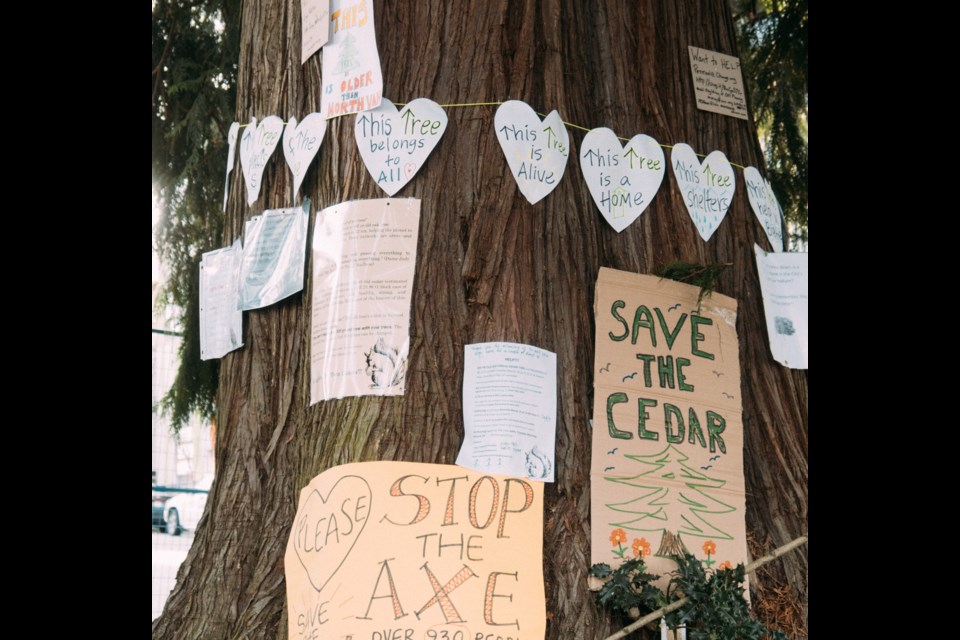Dear Editor:
I am writing to voice my sadness about the large old cedar on 21st Street after having read about its imminent death on the North Shore News website yesterday.
Both Darwin and the City have suggested there is no way around it and speak with a kind of inevitability about the situation. This psyche is commonplace, and our urban trees and forests are being chipped away at across the North Shore — death by a thousand cuts.
If sustainability is important for the city, as it states, it means making difficult choices and employing creative solutions to live with nature instead of dominating it. Surely, a tree on the outer corner of the lot does not present a profoundly difficult design problem. However, the inevitability of the cut is not inherent ("we have no choice," they say), it is a result of the true priorities set forth by the city.
The tree in question has been growing and providing value to the community (including the species that inhabit it) for much longer than any of us will live for, and has the opportunity to continue to serve the community for decades or centuries to come, if we allow it.
Many people will come to know it given the role that Harry Jerome will play for the community. For people who will live in the newly developed area, it will be the largest, oldest living thing that they come into contact with in their daily lives.
Further, as summers continue to become hotter and longer due to climate change, drought conditions are compromising and killing young cedars in our region. A quick walk through Lighthouse Park reveals many trees, some decades old, that could not survive.
The cedar, a species that people have relied on for thousands of years in this region no longer has the kind of predictable conditions that allows young trees to reliably reach maturity. That alone should compel us to prioritize saving the large, old cedars, like the one on 21st Street — they will become rarer and rarer.
Bright and early this morning with 20 to 30 others, I brought my 18-month-old daughter to protest the cutting of this tree. If it is cut down and another planted as "committed to" by Darwin, even if my daughter lives to be 100, she won't see that tree's replacement become what the current tree is — likely not even close.
In attendance up in the branches were two boys, ages 12 and 15, who live a few blocks away, who regularly visit the tree and climb in it. This tree gives them an active, intimate relationship with nature in the place they live, without ever needing to get into a car.
Part of creating equitable communities is giving residents the chance to interact with natural beauty on a daily basis, in the midst of a city.
I hope Darwin will think more deeply about the costs of their design, and what it means to create community.
I hope the city will consider the community’s feelings and respect for our trees, and further, develop policy that demands developers and planners to work with, not against our natural heritage.
We owe it to those kids.
Jordan Manley
City of North Vancouver



